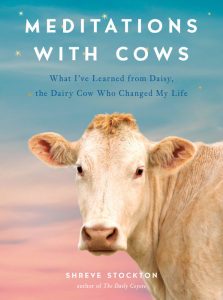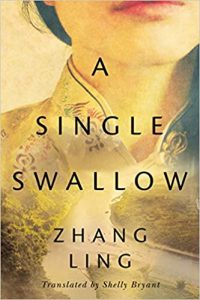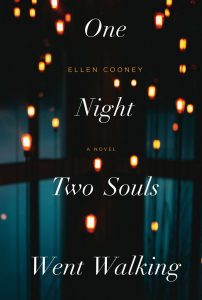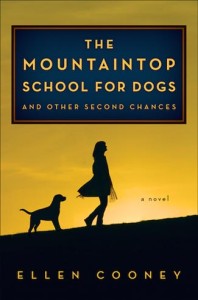
Embracing our differences (Melbourne, Australia, presumably present-day): Three reasons to choose A Room Called Earth, Australian writer Madeleine Ryan’s debut, to usher in a new literary year:
- What better time in recent history to read a novel about embracing our differences?
- What better time in our quarantined lives to reflect on what it means to be alone without feeling lonely?
- Combine #1 and 2 and you have the ingredients for a unique novel about a unique character who defies categorization. She has many strengths but is socially challenged.
Ryan has crafted a provocative novel set within 24 hours, seen through the eyes of a magnetic narrator who expresses herself in honest, no-filters narration and sharpened sensuality: a young woman, probably in her late twenties, early thirties, who lives alone yet has created an inner, earthy sanctum inside the rooms of her home and mind. She controls how much she wants us to know, or not. For starters, she never tells us her name. Perhaps to represent the universe of young women who wish to be valued for who they are, not by societal expectations and stereotypes.
What the protagonist wants to tell us, and show us, is how she feels and acts when invited to a party in light of her social difficulties. Her behavior is not black-or-white. Alternating between the party and her secluded home life, we get a fuller, complex picture.
The novel is aimed at rejecting labels, stereotypes, assumptions. The major one is not labeling her as high-functioning on the autism spectrum (ASD, autism spectrum disorder), since that label stigmatizes and lumps people into one mold, rather than see them as individuals.
Ryan practices what she preaches in the many articles she writes, advocating for the “richness of neurodiversity” as opposed to “neurotypical”. Her novel sticks to the same theme: “embrace who we are, in all our permutations.” And, when we do, expect to “see universes beyond our own that we never knew existed—and that are more peaceful, loving, joyous, and accepting than anything we could have ever dreamed of.”
One of the pleasures of reading this clever novel is we don’t look at the protagonist through our eyes, but through hers. We don’t need to know the full sweep of her life as we can learn a lot about her through the lens of the party. Which she points out she’s “legitimately allowed to be there,” as if the label would exclude her.
Parents rightfully argue, and studies show, that a clinical diagnosis of ASD is of vital importance for early childhood interventions to dramatically improve the long-term outlook of autistic children. We wonder then what the narrator was like as a child? She tells us she has a therapist today, but what were her influences and supports in childhood? She mentions her grandmother, but barely says anything about her parents except they’re gone – until after the party, toward the end.
Another question raised is what purpose does a label serve for high-functioning adults? She’s intelligent, well-informed, independent, and has many healthy interests: nature lover, environmentalist; animal lover; social justice for Australian Aboriginals and prisoners; exotic flowers and trees in her country, including the garden she nurtures; food, stars, moonlight walks. Keep in mind she never tells us she has ASD; her publisher does. Her refuge is “so psychedelic and sensual.” This is not unhappiness speaking to us.
But, she lacks a human bond. The party gives her a chance to do something about that. A tall order as she’s looking for the same “very grounding influence” she feels at home extraordinarily attached to her cat, who provides her with “a sense of wholeness that I rarely experience anywhere, or with anyone.”
Naming her cat Porkchop is notable since it’s the only name in the novel. Animals provide unconditional love, but people haven’t. She says she chose the name as a symbolic gesture since she’s a die-hard vegetarian – organic, “anti-oxidant-rich” food – that she treats as “sacred,” lighting candles to honor the sustenance and pleasure food brings, and to heighten the experience. She’s a pleasure-seeker, hoping to find some pleasure at the party. Does she find it?
A Room Called Earth is a breath of fresh literary air. It encourages us to think about the positive effect of making a sincere effort to understand, respect, and appreciate people’s abilities and gifts, rather than ignore or undervalue them based on bias or preconceived notion.
Take, for example, the question of whether we perceive our narrator as lonely? She tells us she loves herself and accepts herself. And yet, she candidly recognizes that “connection with my own species has become difficult.” Note become, implying she wasn’t always like that. What happened?
She mentions an ex-boyfriend, unnamed too perhaps to symbolize all male relationships that haven’t worked out. He’s cited since their relationship lasted longer than any other, ten months, which surprises her. Surprises us too given how self-aware she is of her social “struggles,” yet she believes the problem was him not her.
Despite social challenges, the narrator is looking forward to the party, yet conversation is difficult. Neurologically caused? Or personality-driven because she desires relationships on her own terms? She’s not interested in superficial connections; she wants meaningful ones.
We’ve been assuming the narrator is attractive. A man at the party confirms that, telling her she’s “very pretty.” A bona fide feminist, she doesn’t want to be valued for her physicality, “fantasy of womanhood,” rather her thoughts, feelings, and intense spirit. She views the people at the party judgmentally, cynically, wittily, also poignantly. The ridiculousness of the partygoers dialogue pops up when you least expect it jarring us, but her impressions resonate.
Our narrator isn’t shy. In fact, she loves calling attention to herself. Ryan wants us to be prepared for someone who has a mind of her own and speaks literally. The party invitation has her fantasizing about what she’ll wear, opening the novel with this catchy line:
“I decided to wear a kimono and high heels to the party because I wanted people to see me in a kimono and high heels at the party.”
No doubt the attention-getting outfit gets noticed. She desires that: “My dream is to leave people wondering, and nothing more. It’s safe, sexy, and I want to live there forever. Mystery is my favorite accessory.” She is mysterious, in an enchanting way.
Setting the novel in Toorak, a wealthy suburb of Melbourne, Australia adds another dimension to the protagonist’s mystique. Her neighborhood, called The Beverly Hills of Melbourne, raises another question: Who’s supporting her independent lifestyle? She doesn’t lack financially, indulging in luxuries and yet doesn’t work. We assume she’s inherited the home. Again, we don’t know if our assumption is correct until the end, after she leaves the party when an event happens that leads her to reveal some more about her parents.
Sometimes the narrator’s mind is all over the place. Neurologically overwhelmed? Or because she thinks deeply about a lot of things and is acutely observant? The brisk chapters serve to not exhaust the narrator, nor us. Quite the contrary, as this is a thought-provoking, page-turner ideal for book clubs.
How can you not love a novel about someone who tells us over and over that’s it okay, actually a good thing, to love yourself and accept yourself? The first step to loving and accepting others.
Lorraine








